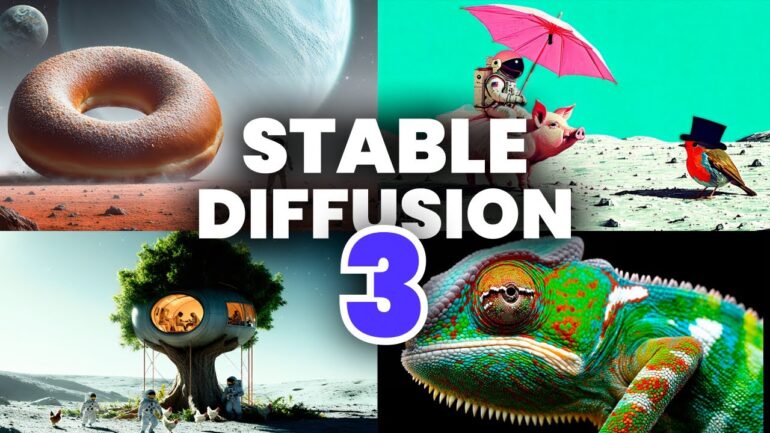TL;DR:
- Stable Diffusion 3 (SD3) by Stability AI was introduced as the latest and most powerful image-generating AI model.
- SD3 employs an updated “diffusion transformer” technique and “flow matching” for enhanced quality.
- Model suite ranges from 800 million to 8 billion parameters, catering to various hardware setups.
- Emad Mostaque emphasizes SD3’s capabilities in multimodal understanding and video processing.
- Stable Diffusion is positioned as the go-to solution for image generation, focusing on accessibility enhancements.
- Proactive safety measures were undertaken to prevent misuse of SD3.
Main AI News:
Stable Diffusion 3 (SD3) by Stability AI emerges as the latest and most potent iteration of the company’s AI model for generating images. This strategic move comes amidst heightened anticipation surrounding recent unveilings by competitors such as OpenAI and Google.
While comprehensive details remain elusive, SD3 represents a concerted effort to maintain a competitive edge. The model, built on a novel architecture, boasts compatibility across various hardware configurations, albeit favoring robust systems. Although not yet available, enthusiasts can enlist in the waitlist to stay informed.
SD3 leverages an enhanced “diffusion transformer,” refining a technique introduced in 2022 and further developed in 2023, now achieving scalability. Notably, similarities exist with Sora, OpenAI’s remarkable video generator, which also adopts analogous principles, including “flow matching,” enhancing output quality efficiently.
Featuring a spectrum of model suites ranging from 800 million to 8 billion parameters, SD3 targets versatility across hardware setups. While optimal performance demands substantial GPU capabilities and a conducive machine learning environment, users enjoy flexibility beyond the confines of an API, a limitation commonly associated with competitors from OpenAI and Google.
Emad Mostaque, CEO of Stable Diffusion, highlights SD3’s prowess in multimodal comprehension and video processing, echoing the priorities of rival platforms. These capabilities, while currently conceptual, indicate a plausible integration into future iterations, unencumbered by technical constraints.
Direct comparisons among these models prove challenging, given their unreleased status, leaving assessments reliant on competitive assertions and selective demonstrations. However, Stable Diffusion holds a distinct advantage, entrenched in the cultural consciousness as the preeminent choice for image generation, unfettered by methodological or content-related constraints.
Positioning itself as an indispensable generative AI solution, Stable Diffusion emphasizes user accessibility through tooling enhancements, underscoring a commitment to lowering adoption barriers. Yet, specifics regarding these enhancements remain undisclosed, inviting speculation.
Notably, the company prioritizes safety, affirming proactive measures against misuse: “We have taken and continue to take reasonable steps to prevent the misuse of Stable Diffusion 3 by bad actors...”
An impending preview is expected to shed light on these safeguards, with subsequent refinements or censorship likely preceding the public release. As details unfold, a deeper dive into the technical intricacies awaits, offering insights into the underlying theory and methodologies driving this new generation of AI models.
Conclusion:
Stable Diffusion 3’s unveiling represents a strategic move by Stability AI to maintain leadership in AI imagery. With its enhanced capabilities, versatile model suite, and emphasis on accessibility and safety, SD3 solidifies its position as the preferred choice for businesses seeking advanced image generation solutions. This underscores Stability AI’s commitment to innovation and responsible deployment of AI technologies, setting a high standard for competitors in the market.

